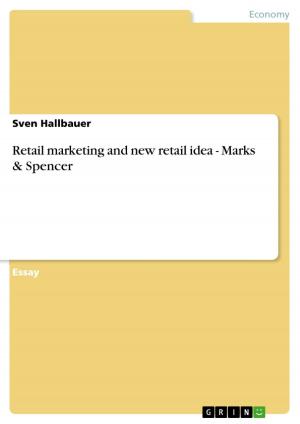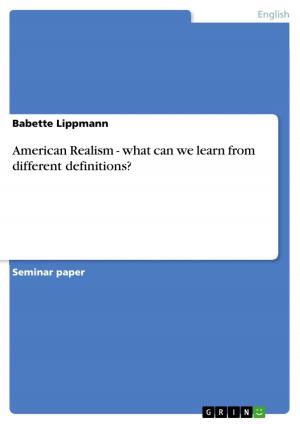Regulatory Fit from Stereotype Threat: Enhancing Women's Leadership Aspirations
Nonfiction, Health & Well Being, Psychology, Social Psychology| Author: | Anke Görzig | ISBN: | 9783640208982 |
| Publisher: | GRIN Publishing | Publication: | November 11, 2008 |
| Imprint: | GRIN Publishing | Language: | English |
| Author: | Anke Görzig |
| ISBN: | 9783640208982 |
| Publisher: | GRIN Publishing |
| Publication: | November 11, 2008 |
| Imprint: | GRIN Publishing |
| Language: | English |
Doctoral Thesis / Dissertation from the year 2008 in the subject Psychology - Social Psychology, grade: magna cum laude, University of Mannheim (Fakultät für Sozialwissenschaften, Lehrstuhl für Mikrosoziologie und Sozialpsychologie), 160 entries in the bibliography, language: English, abstract: A series of studies investigates the impact of regulatory fit on women's leadership aspirations. A regulatory fit occurs when an outcome is presented in gain frames under a promotion focus and in loss frames under a prevention focus. Combining research on regulatory focus and research on stereotype threat it is argued that regulatory fit may result from stereotype threat (loss frame) under a prevention focus and from the absence of stereotype threat (gain frame) under a promotion focus. In line with previous research it is proposed that regulatory fit a) enhances motivation (Studies 1 and 2) and b) creates a feeling right experience that increases the persuasiveness of external stimuli (Study 3). In all three experiments regulatory fit was operationalized as experiencing stereotype threat when under a prevention focus or, respectively, experiencing the absence of stereotype threat when under a promotion focus. Further, women's aspirations to engage in a leadership role were assessed. In Studies 1 and 2 it was shown that women's motivation to occupy a leadership role was enhanced in the regulatory fit conditions compared to women in the nonfit conditions. Study 3 demonstrated that a stimulus (i.e., role model) was more persuasive under regulatory fit. Women experiencing regulatory fit compared to women in the nonfit conditions were more persuaded by role models, showing more interest in a leadership role when confronted with a positive model and less interest when confronted with a negative model. These studies show that stereotype threat can elicit regulatory fit, which in turn affects women's leadership aspirations. Future directions and limitations are discussed.
Doctoral Thesis / Dissertation from the year 2008 in the subject Psychology - Social Psychology, grade: magna cum laude, University of Mannheim (Fakultät für Sozialwissenschaften, Lehrstuhl für Mikrosoziologie und Sozialpsychologie), 160 entries in the bibliography, language: English, abstract: A series of studies investigates the impact of regulatory fit on women's leadership aspirations. A regulatory fit occurs when an outcome is presented in gain frames under a promotion focus and in loss frames under a prevention focus. Combining research on regulatory focus and research on stereotype threat it is argued that regulatory fit may result from stereotype threat (loss frame) under a prevention focus and from the absence of stereotype threat (gain frame) under a promotion focus. In line with previous research it is proposed that regulatory fit a) enhances motivation (Studies 1 and 2) and b) creates a feeling right experience that increases the persuasiveness of external stimuli (Study 3). In all three experiments regulatory fit was operationalized as experiencing stereotype threat when under a prevention focus or, respectively, experiencing the absence of stereotype threat when under a promotion focus. Further, women's aspirations to engage in a leadership role were assessed. In Studies 1 and 2 it was shown that women's motivation to occupy a leadership role was enhanced in the regulatory fit conditions compared to women in the nonfit conditions. Study 3 demonstrated that a stimulus (i.e., role model) was more persuasive under regulatory fit. Women experiencing regulatory fit compared to women in the nonfit conditions were more persuaded by role models, showing more interest in a leadership role when confronted with a positive model and less interest when confronted with a negative model. These studies show that stereotype threat can elicit regulatory fit, which in turn affects women's leadership aspirations. Future directions and limitations are discussed.















